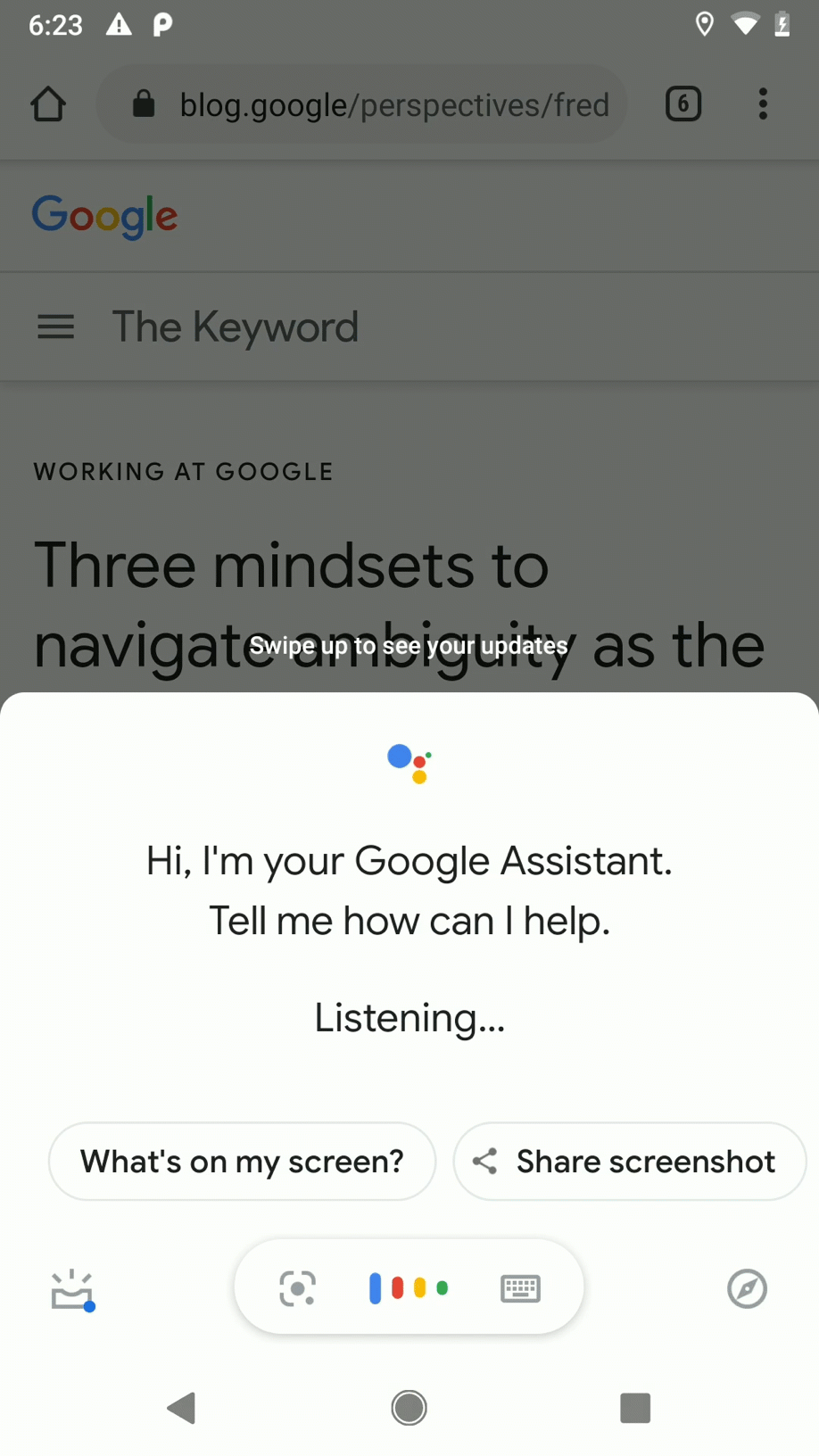Read It 是 Google 助理在 Android 设备上提供的一项功能,让用户可以通过另一种方式阅读长篇网络内容,例如新闻报道和博文。用户可以这样说 “Hey Google, read it”,让应用大声朗读网络内容,突出显示正在朗读的字词,并自动滚动页面。要详细了解这项功能,您也可以阅读 Read It 产品更新博文。

包含网络内容的 Android 应用可以通过使用 onProvideAssistContent() 方法向助理提供信息来支持 Read It。
此流程有助于在与助理分享数据时保持数据结构。接收共享应用内容的用户可以直接通过深层链接或直接接收内容,而不是以文本或屏幕截图的形式。
为您应用中的任何网络内容以及任何可共享的 entity 实现 onProvideAssistContent()。
向助理提供内容
要让 Read It 访问您的内容,您的应用必须向助理提供有关该内容的信息,例如其网络 URI 和一些基本上下文。然后,助理可以检索您的内容,以便大声朗读给用户听。
对于已经使用 WebViews 或 Chrome Custom Tabs 实现网络内容的 Android 应用,可以使用相同的网络 URI 作为 Read It 的起点。
将 Read It 功能与内置意图结合使用时,您只需在用户在调用 App Action 后的任务流中的最终应用 Activity 中实现 onProvideAssistContent() 即可。
例如,如果您的应用显示新闻报道,请在显示报道的最终屏幕中实现 onProvideAssistContent();您无需为任何正在进行或预览屏幕实现它。
在 AssistContent 的 uri 字段中为您的内容提供一个网络 URI。在 structuredData 字段中,使用 schema.org 词汇表以 JSON-LD 对象的形式提供上下文信息。
以下代码段展示了向助理提供内容的示例
Kotlin
override fun onProvideAssistContent(outContent: AssistContent) { super.onProvideAssistContent(outContent) // Set the web URI for content to be read from a // WebView, Chrome Custom Tab, or other source val urlString = url.toString() outContent.setWebUri(Uri.parse(urlString)) // Create JSON-LD object based on schema.org structured data val structuredData = JSONObject() .put("@type", "Article") .put("name", "ExampleName of blog post") .put("url", outContent.getWebUri()) .toString() outContent.setStructuredData(structuredData) }
Java
@Override public void onProvideAssistContent(AssistContent outContent) { // Set the web URI for content to be read from a // WebView, Chrome Custom Tab, or other source String urlString = url.toString(); outContent.setWebUri(Uri.parse(urlString)); try { // Create JSON-LD object based on schema.org structured data String structuredData = new JSONObject() .put("@type", "Article") .put("name", "ExampleName of blog post") .put("url", outContent.getWebUri()) .toString(); outContent.setStructuredData(structuredData); } catch (JSONException ex) { // Handle exception Log.e(TAG, ex.getMessage()); } super.onProvideAssistContent(outContent); }
实现 onProvideAssistContent() 时,请尽可能提供有关每个 entity 的数据。以下字段是必需的:
@type.name.url(仅当内容可通过 URL 访问时需要)
要详细了解如何使用 onProvideAssistContent(),请参阅 Android 开发者文档中的优化助理的上下文内容指南。
